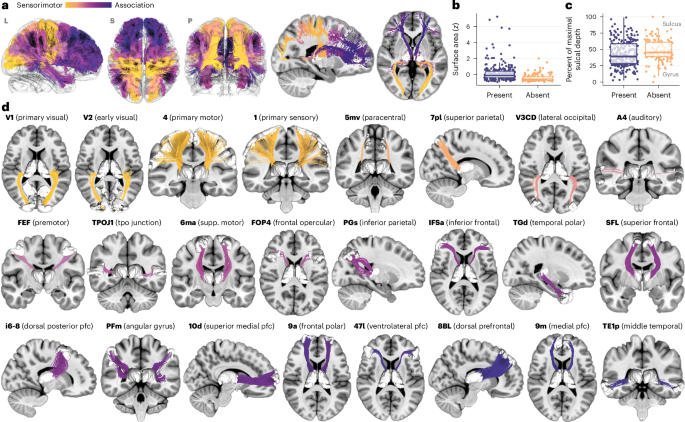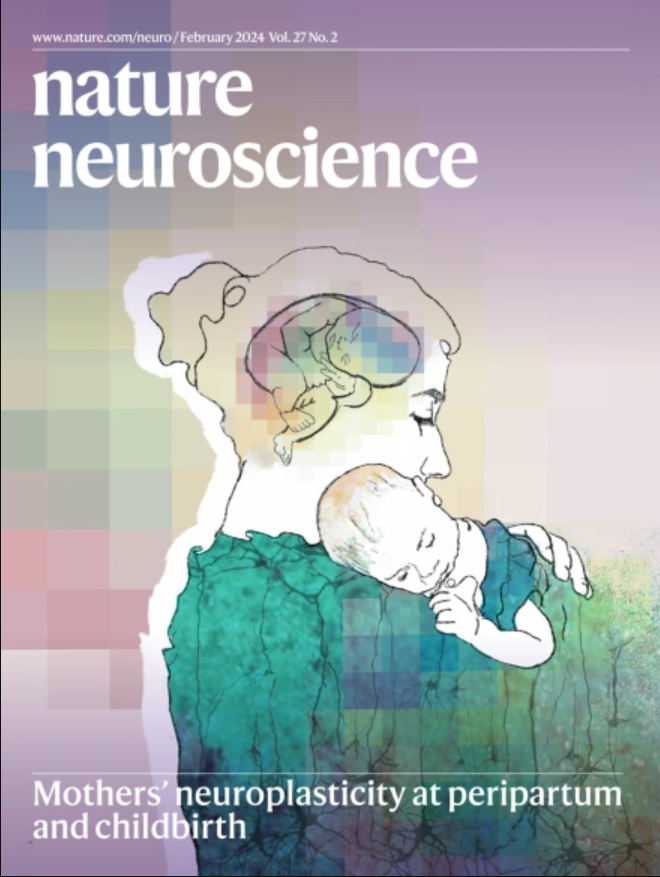人类丘脑皮质结构的连通性发展与皮层可塑性的层次轴一致。
IF 20
1区 医学
Q1 NEUROSCIENCES
引用次数: 0
摘要
人类皮层的发育遵循一个层次分明的、感觉运动到联想的顺序。大脑执行这一序列的能力表明,它依赖于未知的机制来调节皮层成熟时间的区域差异。鉴于来自动物系统的证据表明丘脑轴突机械地调节皮层可塑性的周期,我们在这里评估人类丘脑和皮层之间结构连接的发展是否与皮层成熟的异时性一致。通过推导一种新的人类丘脑连接的神经束图图谱,并将其应用于三个青年样本(8-23岁;总n = 2,676),我们证明了丘脑皮质连接以一种可推广的方式沿着皮层的感觉运动关联轴成熟。具有丘脑连接的皮层联合区需要最长的时间才能成熟,表现出长期发育可塑性的神经化学、结构和功能特征,以及对社会经济环境的高度敏感性。这项工作强调了丘脑在皮层发育可塑性和环境接受性的层次阶段表达中的作用。本文章由计算机程序翻译,如有差异,请以英文原文为准。


Human thalamocortical structural connectivity develops in line with a hierarchical axis of cortical plasticity
Human cortical development follows a hierarchical, sensorimotor-to-association sequence. The brain’s capacity to enact this sequence indicates that it relies on unknown mechanisms to regulate regional differences in the timing of cortical maturation. Given evidence from animal systems that thalamic axons mechanistically regulate periods of cortical plasticity, here we evaluate in humans whether the development of structural connections between the thalamus and cortex aligns with cortical maturational heterochronicity. By deriving a new tractography atlas of human thalamic connections and applying it to diffusion data from three youth samples (8–23 years; total n = 2,676), we demonstrate that thalamocortical connectivity matures in a generalizable manner along the cortex’s sensorimotor–association axis. Associative cortical regions with thalamic connections that take the longest to mature exhibit neurochemical, structural and functional signatures of protracted developmental plasticity as well as heightened sensitivity to the socioeconomic environment. This work highlights the role of the thalamus in the expression of hierarchical periods of cortical developmental plasticity and environmental receptivity. Sydnor et al. developed a new tractography atlas of thalamocortical structural connections and applied it to three youth samples. They uncovered coordinated development between thalamic connectivity and hierarchical cortical plasticity in humans.
求助全文
通过发布文献求助,成功后即可免费获取论文全文。
去求助
来源期刊

Nature neuroscience
医学-神经科学
CiteScore
38.60
自引率
1.20%
发文量
212
审稿时长
1 months
期刊介绍:
Nature Neuroscience, a multidisciplinary journal, publishes papers of the utmost quality and significance across all realms of neuroscience. The editors welcome contributions spanning molecular, cellular, systems, and cognitive neuroscience, along with psychophysics, computational modeling, and nervous system disorders. While no area is off-limits, studies offering fundamental insights into nervous system function receive priority.
The journal offers high visibility to both readers and authors, fostering interdisciplinary communication and accessibility to a broad audience. It maintains high standards of copy editing and production, rigorous peer review, rapid publication, and operates independently from academic societies and other vested interests.
In addition to primary research, Nature Neuroscience features news and views, reviews, editorials, commentaries, perspectives, book reviews, and correspondence, aiming to serve as the voice of the global neuroscience community.
 求助内容:
求助内容: 应助结果提醒方式:
应助结果提醒方式:


